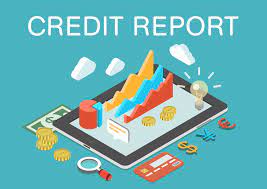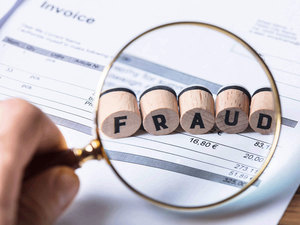When you apply for any form of credit – a loan or a credit card, financial institutions or banks assess your credit report from any credit bureau out of CIBIL, CRIF High Mark, Experian, and Equifax. However, the CIBIL is primarily assessed. The credit report includes details of credit cards, loans, and other credit facilities, along with the details about your repayment history and any late or skipped payments and defaults listed in your credit report. Financial institutions or banks use this information to set the interest rate of a loan. It also helps banks to understand your creditworthiness and credit eligibility.
It is advisable to check your credit report and score at regular intervals to identify any incorrect data or errors related to loans or credit cards that can harm your credit score.
Here are some key points which you need to review while having a credit report and score to keep it sound and neat-o-clean.
Credit Accounts
The section has the loan type, sanctioned or disbursed loan, current balance, overdue amount, and payment history to check for any delinquencies. There is a need for a course of action in case of any delinquency and to confirm the details reported by banks are correct and accurate.
You should draw the attention of the credit bureau if you find any delinquencies. Make sure you look at all your credit accounts with care to identify anything which is not initiated by you. Unidentified accounts or inquiries can be signs of identity theft.
Repayment History
This section of your credit report has information about how regularly you repay your EMIs or credit card dues. When you pay or miss the pay, the credit institutions report that to credit bureaus. Based on that information, the repayment history is updated monthly.
Personal Details
The section has the details which the borrower’s existing lenders have reported to the credit bureau. These include your name, date of birth, personal IDs, and contact information like phone, address, and email.
When a borrower updates any details with lenders, the same details lenders update to the credit bureau as per their updating cycle. If you feel any of the information is incorrect, you may want to use a dispute process to rectify it. However, the credit bureau can only update the incorrect information after confirmation from your lenders.
Each credit bureau has its process and system for dispute management. There is one more important thing that lenders do not have to be members of all credit bureaus. However, they should be members of any one or all four credit bureaus.
Credit Inquiries
It is the list of all inquiries you have made with any lenders for getting a loan, credit card, refinancing, or request for an increase in credit limit. These inquiries are termed hard inquiries which hurts your credit report. However, the impact may be temporary. To keep your credit profile sound and strong, you must be mindful of the frequency of applying for credit.
When you access your credit report from any credit bureau, it is considered a soft inquiry, and it does not have an impact on your credit score. These inquiries are not listed in the inquiry section of your credit report. It is recommended as a healthy financial practice that you must consider checking all four credit bureau reports at regular intervals to ensure good track of your credit history and any delinquencies.
Apart from looking after your credit report, you must be aware of the credit utilization ratio to keep its impact lower on your credit score. The credit utilization ratio means the proportion between the amount of credit you have availed and the amount you spend. We recommend that you should not entirely exhaust your credit card limit. But keep your credit utilization ratio below 30% of your entire credit card limit.
When you use your credit card mindfully and keep its utilization ratio below 30%, it demonstrates that you are a responsible user of credit.
For instance, if you have a credit card with a limit of Rs. 100000 and you have an average monthly spend of Rs. 50000, your credit utilization percentage is 50 percent. However, if you have 2 credit cards with limits of Rs. 80000 each, and the total spend is Rs. 40000, your credit utilization is 25 percent.
Most lenders see borrowers with high credit utilization as riskier profiles to lend them. It indicates that you are more reliable on credit and have difficulty managing debt.
What can you do to rectify any error?
The first step is to get your credit bureau report. Ideally, it is better to check all four credit bureau reports. Next is to analyze the credit report to find any errors. However, it is difficult for those who are not well-versed with banking and credit terminology, you can take help from an expert.
Once you find delinquencies, you should raise a dispute with the credit bureau in whose report you see delinquencies. But you should know that the credit bureau cannot update, edit or delete on their own without confirmation from the bank. All credit bureaus have different dispute management systems and time-bound dispute resolution processes. When you have raised a dispute with any credit bureau, they will cross-verify with the lender. Post their confirmation, they will update inaccurate information or may keep the information as it is. It is important that while disputing, you provide actionable information to the credit bureau like trade line, lender details, exact nature of inaccuracy, etc.
Furthermore, you should collect supporting documents like bank statements, payment receipts, or any other relevant information for your inaccuracy. Additionally, you should also contact relevant lenders to draw their attention to inaccurate information. Please keep in mind that rigorous follow-up is necessary to speed up the process. If you are unsure about taking the matter on your own, you may consult an expert to rectify the error for you.
It is important to keep a neat-o-clean and accurate credit report to be credit healthy.








